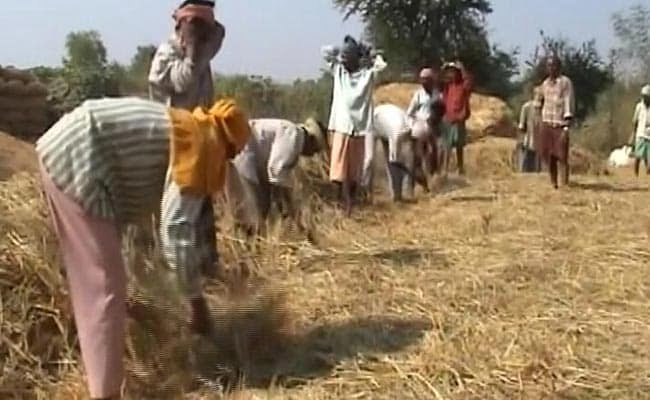Cancer ‘Chalisa’ Recourse With Crisis Brewing In Paddy Fields Of Odisha’s Rice Bowl

Bargarh, the western Odisha district, has now become the unofficial cancer capital of the state. Experts believe the high incidence of cancer could be caused by the heavy use of pesticides in agriculture.
THE DANCE OF DEATH
The family of Japa Pradhan (55) of Bhoipalli village has seen more deaths due to cancer than because of old age. Japa lost his father, two uncles and an aunt to blood cancer within a few decades. His cousin Balaram Pradhan, has been suffering from liver cancer since 2015. “I have no clue why cancer is wreaking havoc in my family,” says Japa.
It’s not only his family in Bhoipali that has been afflicted by cancer. Krishna Chandra Barik, a retired school teacher, lost his daughter, still in her 20s, due to skin cancer. His neighbour Rukmini Pradhan, 45, considers herself a miraculous survivor of breast cancer.
Basanti Bhui, an accredited social health activist, lost her brother to brain cancer in 2011 followed by her mother who succumbed to liver cancer. “At least 15 families in the 200-household village are currently fighting cancer,” she says.
Bhoipalli lies in Bheden, one of the two blocks in Bargarh that is worst hit by cancer, Attabira is the other.
CURSE OF PESTICIDES
“It can be linked to the paddy fields,” Attabira MLA Snehangini Chhuria told Down to Earth. Bargarh gets abundant water from the Hirakud dam in Sambalpur. All farmers here grow paddy, which requires a lot of water. The farmers, in fact, sow paddy twice a year. In the 2018 kharif season, of the total 0.34 million hectares (ha) cultivable land, paddy was grown on 0.24 million ha. No wonder, Bargarh is also called the rice bowl of Odisha.
According to the MLA, farmers from the neighboring Andhra Pradesh, a water-starved state, shifted to Bargarh about 15 years ago. They habitually sprayed pesticides. The native farmers imitated the practice. This is the root of all problems, she asserted.
Farmers here use pesticides such as pyrethroid, organophosphate, thiocarbamate and neonicotenide. The World Health Organisation has placed these in Class -II hazardous category. Class – I being most hazardous. “Even Class-II pesticides “have severe negative effects on human health and environment,” writes BR Mahananda, professor Environment Science, Sambalpur University, in his 2016 research paper Impact of Pesticides on Farmer’s Health of Western Odisha.
DOCTOR SPEAKS
“People here suffer from cervical to breast, head and neck, stomach lungs, blood, colorectal and ovary cancer,” said Ashok Panigrahi, a doctor in the department of pharmacology at the Veer Surendra Sai Institute of Medical Sciences and Research (VSS), Burla.
He said that scientific literature attributed the prevalence of cancer in Bargarh to these pesticides. The mean age of the cancer-affected patients here is above 50 years. “Pesticides take years to show their impact,” he told the magazine. “The government has not conducted any test for groundwater contamination. But we are clear that pesticides are the reason for the high number of cancer cases in Bargarh,” he said.
A NOVEL INITIATIVE
Amidst the dark clouds, the silver lining is a group of IT professionals. The group, known as “Ummedein” (hope in English), organizes camps and visits homes in Bargarh to generate awareness on early cancer detection. It distributes pocket size booklets called Cancer Chalisa, in Odia, that provides information on early cancer detection.
LAST WORDS
“That Bargarh is facing a crisis is very clear,” said Panigrahi. “The government must acknowledge it and begin work on a cancer registry as the first step towards tackling it,” he added.

Comments are closed.